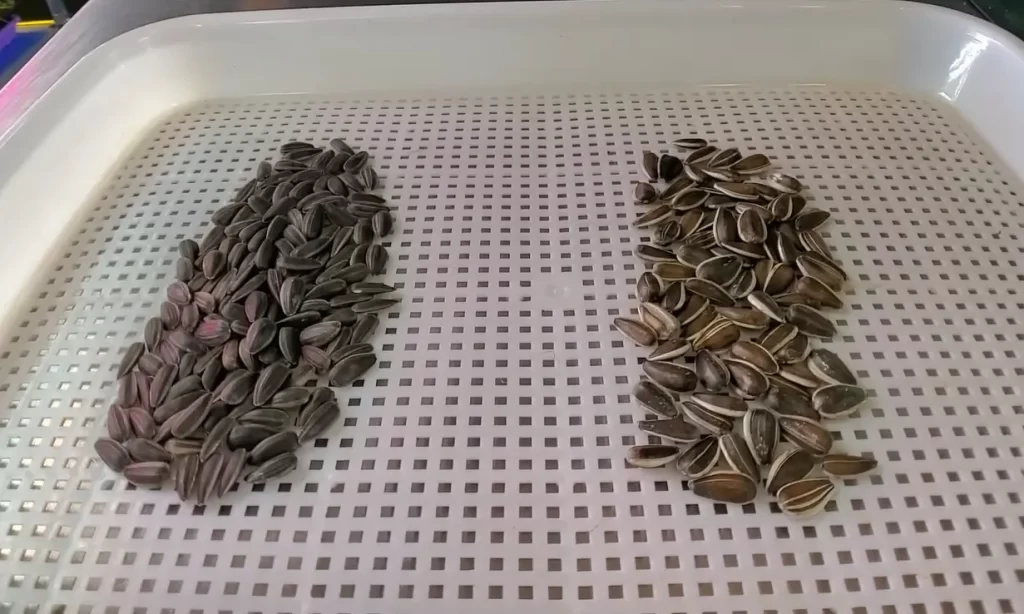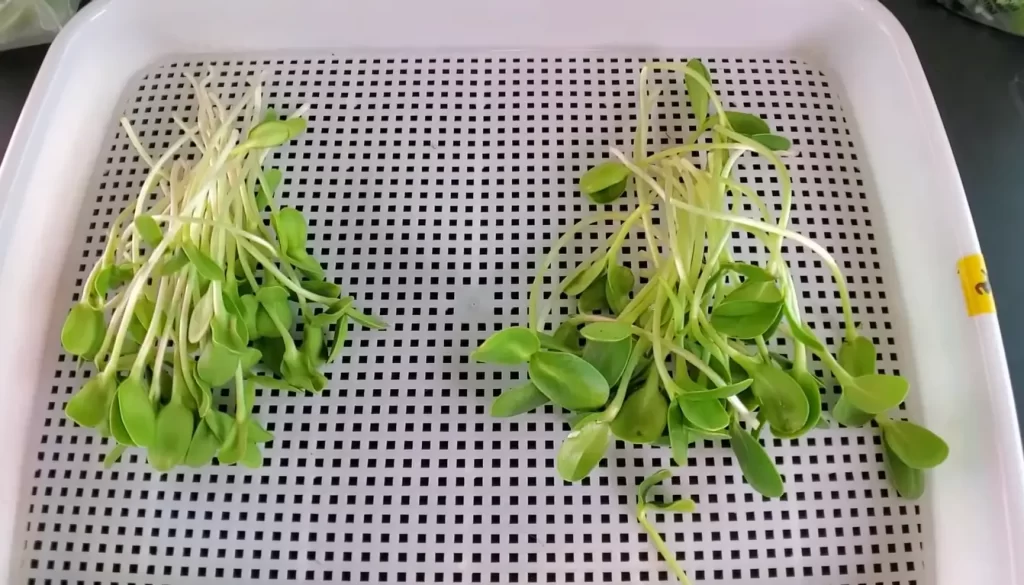Microgreen Seeds Vs. Regular Seeds: In-Depth Explanation
Have you ever wondered about the difference between microgreen seeds and regular seeds? Microgreens have become increasingly popular due to their vibrant colors, intense flavors, and numerous health benefits.
These young and tender plants are harvested at an early stage of growth, usually within 10–14 days after germination, and are packed with vitamins, minerals, and antioxidants.
But are microgreen seeds different from regular seeds? Yes, microgreen seeds are different from regular seeds. Microgreen seeds are specifically chosen for their ability to grow quickly and produce tender, flavorful shoots in a short period, while regular seeds are selected for their mature plant characteristics.
In this blog post, we’ll explore the unique characteristics of microgreen seeds and what sets them apart from their traditional counterparts.
Overview of Microgreen Seeds
Microgreen seeds are young vegetable or herb plants harvested early, typically between 7 to 21 days after germination. These seeds differ from regular seeds and require special care and attention to grow properly.

Popular microgreen seeds include broccoli, radish, lettuce, cabbage, and pac choi. These seeds can be grown in soil, water, and adequate lighting containers.
Germination rates and mature plant size vary depending on the seed type and variety. Many seed companies offer a variety of seeds for microgreens, which are often used as a nutritious addition to salads, sandwiches, and other dishes.
Are Microgreen Seeds Different From Regular Seeds?
Microgreen seeds differ from regular seeds in terms of the variety of seeds used and the stage of growth at which they are harvested. Microgreen seeds are specifically selected for their ability to grow into young seedlings with edible leaves in just a few days, making them ideal for indoor cultivation.
They are harvested at the “microgreen stage,” when the first leaves have emerged, but the plant is not yet mature. Regular vegetable seeds, on the other hand, are meant to be planted in soil and allowed to grow into mature plants that produce fruits and vegetables.
Therefore, while some regular vegetable seeds may be suitable for growing microgreens, specific seed varieties are better suited for microgreen cultivation.
Differences Between Microgreen And Regular Seeds
While microgreens and regular seeds share similarities, there are some key differences in the type of seeds used, growing conditions, and growth stage. Here, we will explore the differences between microgreen and regular seeds.
Growth Cycle and Time to Harvest
One of the primary differences between microgreen and regular seeds is the growth cycle and time to harvest. Microgreens are harvested at a much earlier stage of growth than mature plants. They typically take a few days to a few weeks to grow and are harvested when they have developed their first set of true leaves. In contrast, regular seeds take several weeks to months to mature into a full-grown plant.
Nutritional Content
Another difference between microgreen and regular seeds is their nutritional content. Microgreens are known to be highly nutritious, containing more nutrients and vitamins per weight than mature plants. They are rich in antioxidants, vitamins, and minerals such as iron, potassium, and zinc. On the other hand, regular seeds contain fewer nutrients and vitamins and may require cooking or preparation to release their nutritional benefits.
Flavor and Appearance
Microgreens also differ from regular seeds in flavor and appearance. Microgreens have a much more intense and concentrated flavor than mature plants, with a wide variety of tastes ranging from sweet to spicy. They also have a more delicate and attractive appearance, with brightly colored leaves and stems that can add visual appeal to a dish. Regular seeds, on the other hand, have a more mild taste and a less striking appearance.
Cost and Availability
The cost and availability of microgreen and regular seeds can also differ significantly. Microgreen seeds are generally more expensive than regular seeds, requiring a higher seed density and specialized growing conditions. However, they are becoming increasingly popular and can now be found at many specialty stores and online retailers. Regular seeds, on the other hand, are widely available and can be purchased at most garden centers or online seed companies.
Yield and Harvest Methods
Finally, microgreens and regular seeds differ in yield and harvest methods. Microgreens are typically harvested as soon as they reach the desired size, with multiple harvests possible from a single tray of seeds. Regular seeds, on the other hand, require a longer growing period and generally produce a larger yield per plant. The harvest method for regular seeds can vary depending on the type of plant and may involve harvesting the fruit, leaves, or roots.
How To Grow Microgreens
Microgreens are young plants that are harvested when they are only a few inches tall. They are packed with nutrients and flavor and are easy to grow at home. Here’s a step-by-step guide on how to grow microgreens.
1. Selecting Seeds for Microgreens
The first step in growing microgreens is to choose the right seeds. You can use regular seeds that you would use to grow a mature plant, or you can buy seeds that are specifically meant for growing microgreens. Many seed companies sell a variety of seeds for microgreens, including broccoli, radish, lettuce, cabbage, Pac choi, and more.
2. Preparing the Container and Soil
Next, you’ll need to prepare a container and soil for your microgreens. You can use a variety of containers, such as trays, pots, or even old egg cartons. So, use a container that has drainage holes to prevent water from accumulating at the bottom. Pack the container with potting or garden soil, and level it off.
3. Planting the Seeds
Sprinkle the microgreen seeds over the soil, ensuring they are evenly spaced. Cover the seeds with a thin layer of soil and water them lightly. You can use a spray bottle to mist the soil, so it doesn’t get disturbed.
4. Watering the Microgreens
Once the seeds are planted, keep the soil moist. Water the microgreens daily, using either warm or cold water. Be careful not to overwater, which can lead to mold or rot.
5. Providing Light for the Microgreens
Microgreens need plenty of light to grow. Place the container in a bright area of your home, or use supplemental lighting, such as LED grow lights. If you don’t have access to natural or grow lights, you can also place the container near a window with indirect sunlight.
6. Caring For the Microgreens
As the microgreens grow, they will enter the baby leaf and microgreens stages. So, keep an eye on them during each stage of growth. You can use a seedling warmer to keep the soil warm and promote germination rates. You can also use paper towels or paper bags to cover the seeds and keep them moist during germination.
7. Harvesting the Microgreens
Once the microgreens have reached the edible stage, you can harvest them. Use scissors to cut the microgreens just above the soil surface. Rinse them off and enjoy them fresh in salads, sandwiches, or garnish.
Health Benefits of Microgreens
Microgreens, also known as “vegetable confetti,” are young plants harvested just after the first true leaves appear, typically 1–3 weeks after germination. They are often used as a garnish or in salads and are becoming increasingly popular due to their numerous health benefits.

Nutrient-Dense
Microgreens are highly nutrient-dense and contain high levels of vitamins and minerals, including vitamins C, E, and K, potassium, iron, and calcium. In fact, some studies have shown that microgreens contain up to 40 times more nutrients than their mature plant counterparts.
Cancer-Fighting Properties
Microgreens are rich in antioxidants, which can protect the body against cancer and other chronic diseases. In particular, broccoli microgreens have been found to contain high levels of sulforaphane, a compound shown to have anti-cancer properties.
Heart Health
Microgreens may also improve heart health by reducing the risk of heart disease. They are rich in fiber, which can help lower cholesterol levels and reduce the risk of heart disease. Additionally, some studies have found that microgreens may help lower blood pressure.
Final Words
The answer is, “Are microgreen seeds different from regular seeds” Yes, microgreen seeds are different from regular seeds. Microgreen seeds are specifically chosen for their ability to grow quickly and produce tender, flavorful shoots in a short period, while regular seeds are selected for their mature plant characteristics.
Understanding these differences is important for successful microgreen growth and harvest. By selecting high-quality microgreen seeds, providing proper care, and experimenting with different varieties, anyone can enjoy the benefits of these nutritious and delicious plants.
